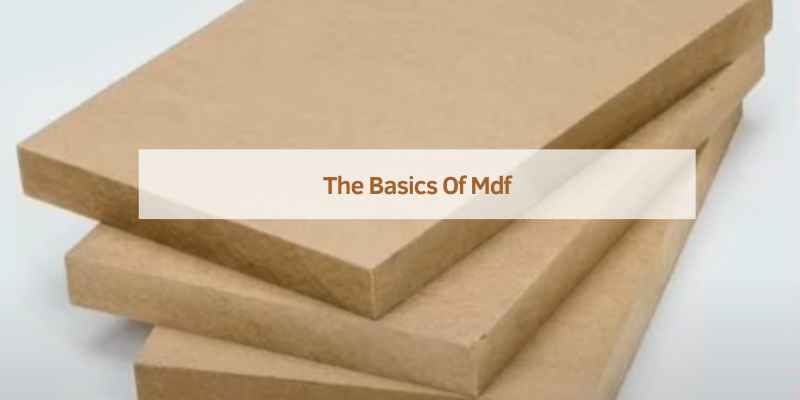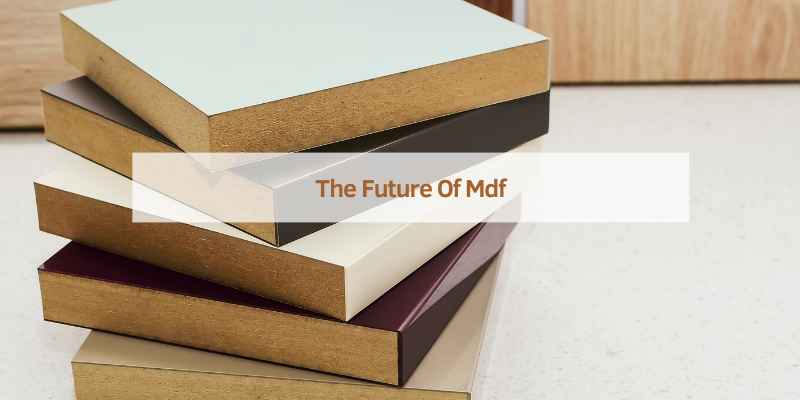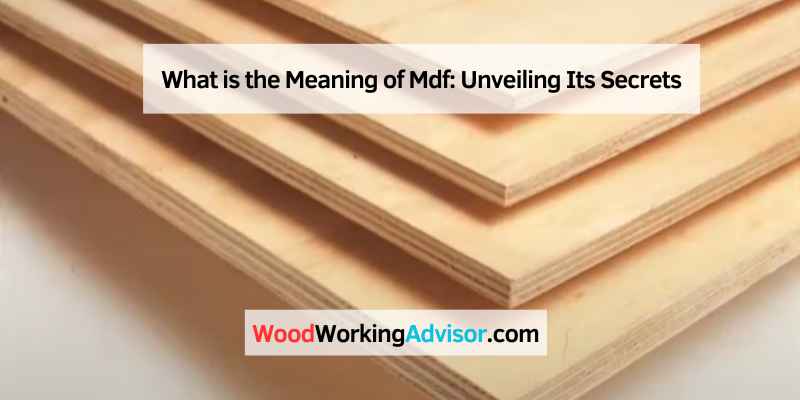MDF stands for Medium Density Fiberboard. It is an engineered wood product made from wood fibers and resin.
MDF is a versatile material widely used in furniture, cabinetry, and interior applications. It offers a smooth surface, making it ideal for painting and finishing. MDF is more affordable than solid wood and provides consistent strength and durability. It is easy to cut and shape, allowing for intricate designs and detailed work.
MDF is also more resistant to warping and cracking compared to natural wood. Its uniform composition makes it a reliable choice for various projects. Always ensure proper ventilation when working with MDF, as it can release harmful particles. MDF is a practical, cost-effective option for many woodworking needs.
The Basics Of Mdf
MDF stands for Medium Density Fiberboard. It is a type of engineered wood product. MDF is popular in many industries. It is known for its smooth surface and durability.
Composition And Production
MDF is made from wood fibers. These fibers are bonded together with resin and wax. The mixture is then heated and pressed into sheets.
| Ingredient | Function |
|---|---|
| Wood Fibers | Main component |
| Resin | Binder |
| Wax | Water resistance |
The production process involves several steps:
- Wood is broken down into fibers.
- The fibers are mixed with resin and wax.
- The mixture is formed into sheets.
- The sheets are heated and pressed.
- The final product is cooled and cut to size.
Varieties And Uses
MDF comes in different types. Each type has specific uses.
- Standard MDF: Used for furniture, cabinets, and shelves.
- Moisture Resistant MDF: Suitable for bathrooms and kitchens.
- Fire-Retardant MDF: Used in areas needing fire resistance.
MDF is versatile. It can be cut, drilled, and painted easily. It is also an affordable alternative to solid wood.

Mdf Vs. Solid Wood: A Comparative Analysis
MDF vs. Solid Wood: A Comparative Analysis
Understanding the difference between MDF and solid wood is essential. Both materials have unique properties and uses. This section will explore their strengths, durability, and cost implications.
Strength And Durability
Solid wood is known for its natural strength and durability. It can withstand heavy loads and lasts for many years. Solid wood is less likely to sag or warp over time.
MDF (Medium Density Fiberboard) is engineered wood. It is made from wood fibers glued together under heat and pressure. MDF is dense and smooth. It is less likely to crack or split compared to solid wood.
| Material | Strength | Durability |
|---|---|---|
| Solid Wood | High | Very Durable |
| MDF | Moderate | Durable |
Cost Implications
Solid wood is generally more expensive due to its natural origins and quality. The cost can vary based on the type of wood. Hardwood varieties like oak and maple are pricier. Softwoods like pine are more affordable but still costlier than MDF.
MDF is more affordable. It is an excellent choice for budget-conscious projects. MDF is widely used in furniture and cabinetry due to its cost-effectiveness.
Here are some key points about the cost:
- Solid wood can be a long-term investment.
- MDF offers a budget-friendly alternative.
- Consider your project’s needs and budget before choosing.
Choosing between MDF and solid wood depends on your specific requirements. Consider strength, durability, and cost before making a decision.
Environmental Impact Of Mdf
Medium Density Fiberboard (MDF) is a popular material in furniture and construction. While it is versatile and cost-effective, it has significant environmental impacts. Understanding these impacts helps in making eco-friendly choices.
Sustainability Concerns
MDF is made from wood fibers bonded with resin. The production process involves cutting down trees, which affects forests. Deforestation leads to loss of habitat for wildlife.
The resin in MDF often contains formaldehyde. Formaldehyde is a hazardous chemical that can harm human health. Its emissions contribute to indoor air pollution.
The energy required to produce MDF is high. This adds to its carbon footprint. High energy consumption means more greenhouse gas emissions.
Recycling And Disposal
Recycling MDF is challenging. The resins make it hard to break down. Most MDF ends up in landfills, where it takes years to decompose.
Burning MDF releases toxic chemicals into the air. Safe disposal methods are limited.
Some companies are exploring ways to recycle MDF. These methods are still in the early stages. Innovative recycling solutions are needed.
Table Of Environmental Impact
| Impact | Description |
|---|---|
| Deforestation | Loss of trees and wildlife habitat |
| Formaldehyde Emissions | Harmful to human health and indoor air quality |
| High Energy Consumption | Increased greenhouse gas emissions |
| Landfill Waste | Long decomposition time |
| Toxic Burn Emissions | Release of hazardous chemicals |
Making informed choices about MDF can mitigate these environmental impacts. Consider alternatives or look for sustainable options.
Health Considerations When Using Mdf
Medium Density Fiberboard (MDF) consists of wood fibers bonded with resin under high pressure and temperature. It releases formaldehyde, which poses health risks if inhaled over prolonged periods. Proper ventilation and protective gear are essential when cutting or sanding MDF to minimize exposure.
Medium-Density Fiberboard (MDF) is a popular building material. It’s made from wood fibers and resin. Despite its versatility, there are health risks to consider. Understanding these risks can help you make safer choices.
Formaldehyde Emissions
MDF contains formaldehyde, a known carcinogen. Formaldehyde emissions can occur during the cutting and sanding of MDF. These emissions can cause respiratory issues and eye irritation.
| Health Risk | Potential Impact |
|---|---|
| Respiratory Issues | Coughing, wheezing, asthma |
| Eye Irritation | Redness, watering, discomfort |
| Carcinogenic Effects | Increased cancer risk |
Safety Measures
Proper ventilation is crucial when working with MDF. Use dust masks and safety goggles to protect yourself. Cutting MDF outdoors can reduce indoor air contamination.
- Install exhaust fans to improve air circulation.
- Use a high-quality dust mask.
- Wear safety goggles to protect your eyes.
- Cut MDF in well-ventilated areas.
Sealing the edges and surfaces of MDF can also reduce formaldehyde emissions. Use low-emission MDF when possible. This type of MDF has lower levels of formaldehyde.
Implementing these safety measures can significantly reduce health risks. Always prioritize your well-being when using MDF.
The Aesthetic Appeal Of Mdf
Medium-Density Fiberboard, or MDF, is a popular material in the furniture world. It offers a unique blend of beauty and functionality. MDF is known for its smooth surface and versatility. Let’s explore its aesthetic appeal.
Finishing And Painting
One major advantage of MDF is its smooth surface. This makes it ideal for finishing and painting. MDF can be easily painted in any color. It absorbs paint evenly, ensuring a flawless finish. This material also takes well to a variety of finishes. You can choose matte, glossy, or satin finishes. The results will always be stunning.
Another benefit is its ability to mimic other materials. MDF can be finished to look like wood, stone, or even metal. This makes it a cost-effective alternative. You can achieve high-end looks without breaking the bank.
Design Flexibility
MDF is incredibly versatile in design. It can be cut, shaped, and molded into intricate designs. This flexibility allows for creative freedom. You can create custom furniture pieces with ease.
Here are some design possibilities with MDF:
- Custom cabinetry
- Decorative wall panels
- Unique shelving units
- Intricate moldings
These design options make MDF a favorite among designers and DIY enthusiasts. The material is also lightweight yet sturdy. This makes it easy to handle during the design process.
In summary, MDF offers exceptional aesthetic appeal. Its smooth surface is perfect for painting and finishing. Its design flexibility allows for endless creativity. Whether for home or office, MDF can elevate any space.
Mdf In The Manufacturing Industry
MDF stands for Medium-Density Fiberboard. It is a versatile product in the manufacturing industry. MDF is made by breaking down hardwood or softwood residuals into wood fibers. These fibers are combined with wax and resin binder and formed into panels by applying high temperature and pressure. MDF is popular because of its smooth surface and uniform density.
Furniture Creation
In the furniture industry, MDF is a common material. It is easy to cut, shape, and paint. This makes it ideal for making furniture. MDF is used to create a wide range of furniture products. These include:
- Cabinets
- Tables
- Bookshelves
- Bed frames
Its smooth surface allows for a high-quality finish. This is why many manufacturers prefer MDF over other materials. The uniform density ensures that every piece of furniture looks the same. MDF is also cost-effective. This makes it a popular choice for mass production.
Building Materials
MDF is also used in building materials. It is a preferred material for interior applications. MDF is used in:
- Wall panels
- Flooring
- Door skins
- Window frames
Its smooth surface makes it perfect for painting and laminating. MDF is also easy to work with. It can be cut and shaped without splintering. This makes it a popular choice for builders and contractors. MDF is also resistant to warping and cracking. This ensures durability and longevity in building projects.
| Feature | MDF |
|---|---|
| Density | Uniform |
| Surface | Smooth |
| Cost | Cost-effective |
| Uses | Furniture, Building Materials |
MDF is a versatile and valuable material in the manufacturing industry. Its many benefits make it a top choice for both furniture and building materials.
Innovations In Mdf Technology
Medium Density Fiberboard (MDF) has seen numerous advancements. These innovations have enhanced its properties and broadened its applications. This section explores some key technological breakthroughs in MDF.
Enhanced Properties
The latest MDF technology offers improved durability and strength. These properties make MDF suitable for a variety of uses.
One significant innovation is the use of resin binders. These binders make MDF more resilient to moisture. This reduces the risk of swelling and warping.
Enhanced fire resistance is another key improvement. New MDF types can withstand higher temperatures. This makes them safer for home and commercial use.
| Property | Traditional MDF | Innovative MDF |
|---|---|---|
| Durability | Moderate | High |
| Moisture Resistance | Low | High |
| Fire Resistance | Low | High |
New Applications
Innovations in MDF have led to new applications in various fields. Designers and builders now use MDF in more projects.
- Furniture Manufacturing: Enhanced MDF is ideal for making durable furniture.
- Construction: High-strength MDF is used in wall panels and flooring.
- Soundproofing: MDF with improved density helps in soundproof rooms.
These new applications prove the versatility of MDF. Its enhanced properties make it a preferred material for many industries.
The Future Of Mdf
Medium Density Fiberboard (MDF) is a versatile material. It has a promising future in the construction and furniture industries. MDF’s adaptability and cost-effectiveness make it a preferred choice. Let’s explore the future trends and eco-friendly advancements in MDF.
Market Trends
The MDF market is growing rapidly. Demand for MDF products is increasing due to its affordability and versatility. Many industries use MDF for furniture, flooring, and cabinetry.
The global MDF market is expected to grow at a significant rate. This growth is driven by the rising construction activities and urbanization. Asia-Pacific is the largest market for MDF, followed by North America and Europe.
Here are some key market trends:
- Increased use in residential and commercial projects
- Rising popularity of ready-to-assemble furniture
- Growing demand for eco-friendly building materials
Advancements In Eco-friendliness
Eco-friendliness is a major focus in the MDF industry. Manufacturers are adopting sustainable practices to reduce their environmental impact.
Some advancements in eco-friendliness include:
- Use of recycled wood fibers: Reduces the need for virgin wood.
- Low-emission resins: Reduces harmful emissions during production.
- Energy-efficient manufacturing processes: Lowers energy consumption and greenhouse gas emissions.
Innovative technologies are being developed to make MDF even more eco-friendly. These technologies aim to improve the recycling process and reduce waste.
The table below highlights some key eco-friendly features of modern MDF:
| Feature | Benefit |
|---|---|
| Recycled Wood Fibers | Reduces deforestation |
| Low-Emission Resins | Improves air quality |
| Energy-Efficient Processes | Lowers carbon footprint |
The future of MDF is bright with these advancements and market trends. It will continue to be a key material in various industries.

Frequently Asked Questions
What Is An Mdf Used For?
MDF is used for furniture, cabinetry, and shelving. It offers a smooth surface for painting and veneering. MDF is also ideal for intricate designs and moldings due to its density and stability.
Which Is Better Plywood Or Mdf?
Plywood is stronger and more durable, making it better for heavy-duty furniture. MDF is smoother and easier to paint, ideal for decorative projects. Choose based on your specific needs.
Is Mdf Wood Good Quality?
MDF wood is of decent quality for indoor furniture and cabinetry. It is smooth, consistent, and cost-effective. MDF resists warping but isn’t as strong as solid wood. It is also easy to paint and finish.
What Does The Abbreviation Mdf Stand For?
MDF stands for Medium Density Fiberboard. It is an engineered wood product made from wood fibers, resin, and wax.
Conclusion
MDF, or Medium Density Fiberboard, is a versatile material used in various applications. Its affordability and durability make it popular. Whether for furniture or cabinetry, MDF offers a reliable solution. Understanding MDF’s meaning helps in making informed choices for your projects.
Choose MDF for its strength and cost-effectiveness.


